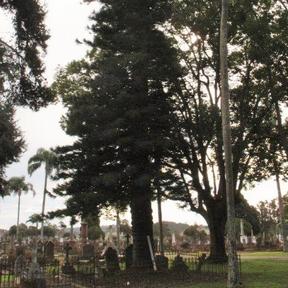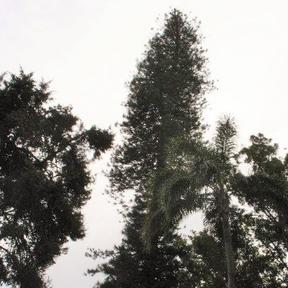Level of Significance
- File
- Local
- Regional
- State
- National
Age (approx)
110yrsTrees
2Diameter
0.8mHeight - 24m


Details
- Outstanding species (Scientific)
- Landscape (Social)
- Spiritual/Religious (Social)
- Contemporary association (Social)
- Park/Garden/Town (Historic)
- Attractive (Aesthetic)
- Species/Location (Aesthetic)
Statement of Significance
The rich, fertile soil, temperate climate and the interest of many of its citizens in things botanical, has resulted in Toowoomba Region’s ability to grow a wide range of indigenous and non-indigenous plants. In 1860, the area was the first to hold an Agricultural Show in Queensland – 15 years before Brisbane. Walter Hill, the then Government Botanist and first curator of the Brisbane City Botanic Gardens, travelled to Toowoomba to advise with the design and planning of Queen's Park and street plantings in Toowoomba. He subsequently imported many tree species from Europe, Asia and other parts of the world to be planted there. Hill Street in Toowoomba is named in his honour. The town attracts many visitors in September for its famous Carnival of Flowers, where people come from near and far to enjoy Toowoomba’s many parks and gardens. Since the first registered burial in 1866, the Drayton and Toowoomba Cemetery has been an integral part of Toowoomba’s history. It is one of the earliest surviving public burial grounds in Queensland and contains the graves of pioneers, previous Mayors and other prominent people who shaped Drayton and Toowoomba’s local history. The trees are growing in the oldest part of the cemetery; the grassy area around the first tree was planted with ornamental trees from about 1900 to 1950 and the only readable headstone in the family plot below the second tree is dated 1892.
These trees are of outstanding height and apparent age. Their size renders them an important landmark in this historic cemetery where they contribute significantly to the landscape. They grow in a burial ground that is still in use and therefore has religious and ceremonial importance to the local community. These plantings are in the oldest part of the cemetery, which has been in use since 1866. The pines are extremely tall and imposing trees.
The trees are located just inside the main gate to the cemetery from ANZAC Avenue. The first is on the left in the lawn area with no graves and the second is 40 metres beyond in a fenced family grave plot in the oldest part of the cemetery.








